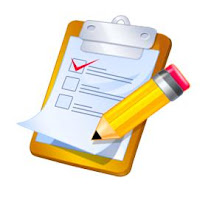TESL-0120 - Unit Four Reflection
Unit 4 has helped me understand the usefulness and
limitations of assessments. The unit focused on ways in which listening and
speaking skills can be assessed. The outline for this unit explained the
differences between diagnostic, summative, and formative assessments.
Diagnostic assessments are used to determine the skill level of students and
usually are presented in the form of a standardized test. The International
English Language Testing System (IELTS) is an example of a diagnostic
assessment and is often used to evaluate language proficiency and to decide the
placement of students in advanced language training programs and post-secondary
education. Summative assessments are used to determine the amount of language understanding
that students have after the completion of a unit, course, program, or grade
level. They are usually structured in the form of a test or exam. Formative
assessments are used as an informal way to determine the current level of their
students’ language proficiency. The information gained from this type of
assessment acts as a base for teachers to plan appropriate language lessons
that suit their students’ abilities and goals.
Teachers can construct assessments once they know
which of these outcomes is most appropriate for achieving the goals of their
course or program. Teachers must make sure that they are accurately measuring
and evaluating skills in a meaningful way. Sometimes teachers are limited regarding
which assessments they can use due to time restrictions and the amount of
resources they have access to. Teachers who have large class sizes and have
students with diverse educational backgrounds and abilities will have more complex
factors that they will need to consider when planning how they will conduct
assessments of their students. In addition, some schools and other education facilities
may have specific expectations for teachers regarding what that they teach and
how they should teach it. Considering all the elements involved in planning and
conducting assessments has made me realize that deciding which assessments are
the most suitable is a subjective process and much is left to the discretion of
the teacher.
I found the videos on listening and speaking
assessments very helpful in understanding the varieties of assessments teachers
can use and their strengths and weaknesses. I experienced an “aha!” moment when
one of the videos explained that assessments are used to measure and evaluate
students’ abilities to use skills in real life situations. As such, it only
makes sense to use a type of assessment that mimics a real-life situation and
setting. This resonated with me because of my own experiences volunteering. The
students who I have worked with seem to grasp aspects of sentence structure while
the lessons are being conducted. However, they seem to struggle with simulating
conversations with other students and during tests when they are asked to
answer questions. This has made me consider how I could try to remedy
situations like this and help my students to retain this kind of information in
the future. I have also thought about the benefits of incorporating other types
of assessments. For example, I could periodically give students a
self-evaluation sheet where they can assess their own abilities and skill levels
so that they can track their progress and retain their motivation throughout
the length of the program or year.

0 comments